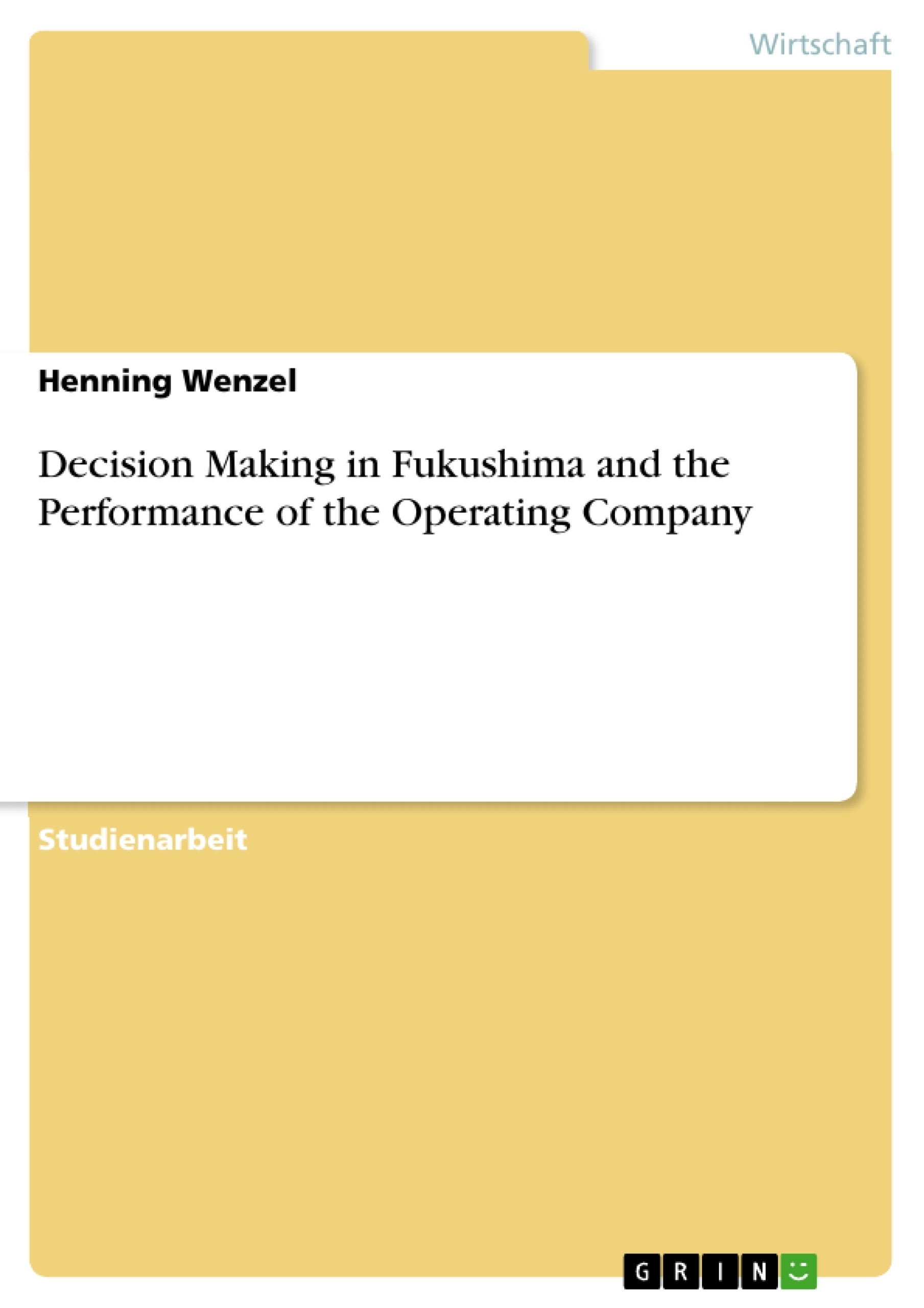The nuclear disaster in Fukushima Daiichi, Japan may be one of the worst natural disasters in Japans history ever and after Hiroshima in 1945 and Chernobyl in 1986 the third worst nuclear disaster in human history. What is called “3/11” is comprised of three temporally sequenced and causally linked but analytically separable disasters. On 11th March 2011 a Richter scale 9 earthquake occurred, with its epicentre 100km off the northeast coast of Japan. It was followed by a giant tsunami. The quake and tsunami caused a massive amount of damage and resulted in considerable loss of life. It also destroyed the reactor cooling system of the Fukushima Daiichi nuclear power plant complex, which led to massive explosions and the release of radioactive materials into the environment.
In today´s rapidly changing environment, management personnel, whether in companies, in non-profit organizations or within governmental departments, are constantly confronted with decision problems with far-reaching consequences. This assignment will explain the terms of the decision-making process as well as characteristics of disasters by transferring it on the Fukushima Daiichi disaster in 2011.
Besides the introduction and the objectives, the structure of this assignment bases on the explanation and definition of disasters, crisis and their correlation in chapter 2. Chapter 3 explains the rational choice theory as well as the psychology of decisions. The course of the disaster as well as the failures in Fukushima is described in chapter 4. The assignment closes with a conclusion in chapter 5.
Table of Contents
Executive Summary
List of Abbreviations
List of Figures
1 Introduction
1.1 Objective
1.2 Methodology
2 Disasters
2.1 Definition of Disasters
2.2 Crisis Characteristics
2.3 Correlation between Disasters and Crisis
2.4 Crisis caused by Natural Disasters
2.5 Human Reactions to Disasters
3 Decision Making
3.1 Definition
3.2 Rational Choice Theory
3.3 The Psychology of Decisions and the Human Factor
4 Disaster in Fukushima Daiichi
4.1 Course of Disaster
4.2 Performance of the Operator TEPCO
4.3 Failures
4.4 Human Failure - “Manmade Disaster”
5 Conclusion
Bibliography
Integrated Total Management Checklist: 360-degrees analysis
List of Abbreviations



